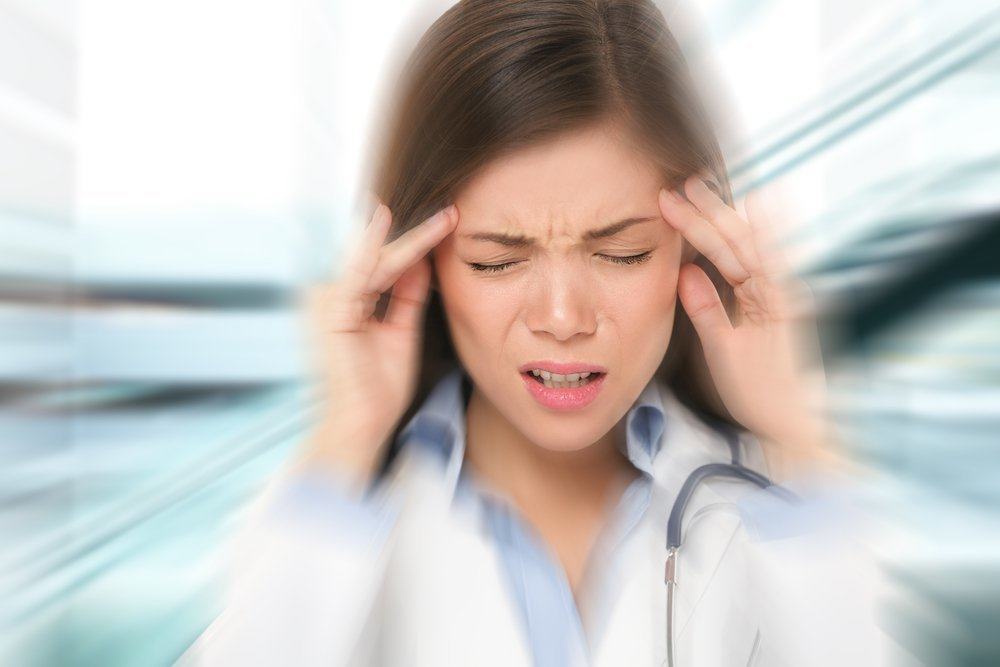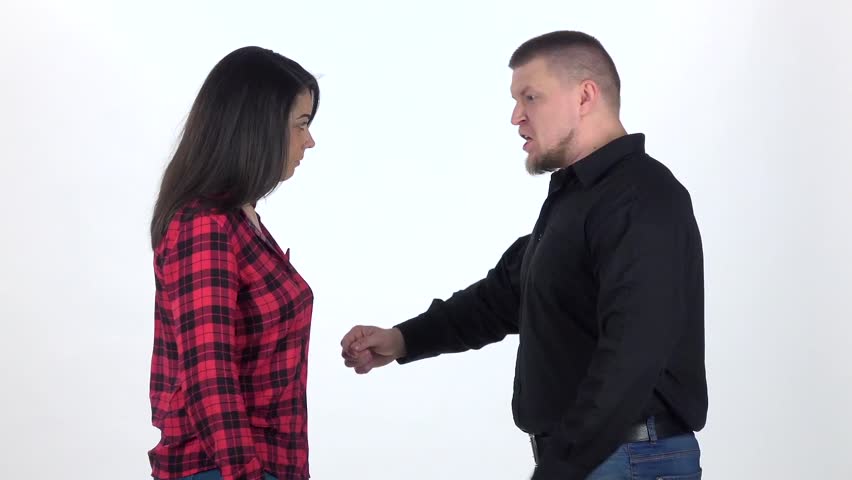Contents:
- Medical Video: What Causes Migraine Disease? 5 Factors in Migraine Neurobiology
- What are the types of headaches?
- 1. Tension headaches (tension headache)
- 2. Migraine
- 3. Cluster headaches
- 4. Sinus headache
- 5. Hormone headaches
- What are the causes of headaches?
- Causes of primary headache
- Causes of secondary headaches
- When should I visit a doctor?
- 1. Not treated properly
- 2. Difficulty talking and numbness
- 3. Accompanied by fever and stiff neck
- 4. Accompanied by visual impairment
- 5. Accompanied by nausea, vomiting, and sensitive to light or sound
- 6. Appears after doing certain activities
- 7. Suddenly appears and feels very painful
- 8. Symptoms get worse when changing positions
- How to diagnose this condition?
- What are the options for headache medicine that can be consumed?
- Other ways to treat headaches
- 1. Relaxation
- 2. Rest in a dark room
- 3. Compress
- 4. Light massage
- 5. Stretching
- 6. Drink lots of water
- 7. Eat
Medical Video: What Causes Migraine Disease? 5 Factors in Migraine Neurobiology
Headaches are the most common type of pain that everyone experiences. Pain can be mild to severe on the head, scalp, and sometimes may radiate to the neck. While most of these conditions can last for a short time, other types can last for hours and sometimes days. Treatment may include lifestyle changes, relaxation and sometimes needed drug therapy. The following are further explanations regarding the various types and causes of headaches that you should know.
What are the types of headaches?
Basically this condition has around 150 species. But the most common types include:
1. Tension headaches (tension headache)
This is the condition most often experienced by people. In fact, many people call it a "daily headache" because almost everyone must have experienced it in a few times of their lives.
You may experience constant right headaches. The pain in the right side of the head is the most common type, although there is no definite clarity about the cause. In addition, you may also feel stiff behind the neck and shoulder muscles then spread forward, and feel the pressure behind your eyes together with the pressure on your jaw.
This condition can be anyone and at any age, but not severe enough to interfere with your daily life. In many cases, the right headache will disappear after 30 minutes to several days.
2. Migraine
A migraine is a recurrent attack of headaches followed by pain that is usually severe and often makes the sufferer helpless. Many people call this condition the next headache.
The pain is throbbing intensely or in the form of extreme pain like being hit by a hard object. However, this condition is classified as a neurological disorder due to a lower resistance to stimulation of migraine causes, different from normal headaches or clusters.
Apart from feeling the headache, some people also experience nausea, vomiting, or sensitivity to noise or light. This condition is fairly common because it can affect about 1 in every 5 women and about 1 in every 15 people in men.
The next headache is said to be serious if it lasts from 4 hours to 3 days and is accompanied by other symptoms that are so severe that it prevents you from doing normal activities. The next headache is also said to be severe if the patient has a history of attacks of at least 2-5 attacks with the same pattern.
3. Cluster headaches
Just like migraines, this condition also causes a side headache on one side of the head. The difference is that intense pain occurs suddenly and tends to appear behind the eyes or the area around the eyes.
In addition to intense pain, other symptoms of this condition are red and runny eyes, small pupils, and runny nose. This condition is fairly common, but is most severe among the other types.
Each attack of the next headache can last 15 minutes to 3 hours and often wakes the patient from sleep because the pain can be very bad and intense. Symptoms of this condition can occur every day, and last several weeks or months at a time, before subsiding.
This condition may disappear completely for months or years, but can occasionally come back again. Men are 3-4 times more affected by this condition than women.
4. Sinus headache
The typical symptom of this condition is intense and constant pain in your cheekbones, forehead, or nose. Sometimes, symptoms of pain that are felt almost similar to migraine symptoms. This condition is caused by a viral infection, such as a flu virus.
This virus will spread to the sinus cavity from the upper respiratory tract, so that eventually causes the sinus wall (small space in the skull) to experience inflammation.
Pain usually comes with other sinus symptoms, such as a runny or stuffy nose, ringing in the ears, fever, and sore throat.
5. Hormone headaches
This condition often occurs in women, especially when approaching or during the menstrual cycle or menopause. Other triggers may be after pregnancy or when taking birth control pills.
Although back or side headaches are not life threatening, this condition can be a sign of a more serious health condition, such as a stroke.
That is why, if you suspect that you have symptoms that have been mentioned repeatedly and don't improve in some time, it's a good idea to consult a doctor immediately.
What are the causes of headaches?
Knowing the symptoms you feel can help the doctor determine the cause of the headache and the right medication for headaches. Most causes of side headaches are not the result of serious illness, but some may be caused by life-threatening conditions that require immediate medical care
This condition is generally grouped based on the cause. Here are some of the causes of back or side headaches that you should know:
Causes of primary headache
This condition is usually caused by pain receptors that are too active in your head. It is estimated that there is a chemical activity that occurs in the brain, nerves, blood vessels inside and outside the skull, and the muscles in the head and neck. This condition often occurs not as a result of certain health conditions.
The following are some of the most common causes of primary headaches including:
- Migraine
- Tense headaches
- Cluster headaches
Certain lifestyles can also be the cause of primary headaches, such as:
- Alcohol, especially red wine
- Certain foods, such as processed meat containing nitrates
- Changes in sleep or lack of sleep
- Poor posture
- Skipping meals
- Excessive stress
Causes of secondary headaches
This condition is usually based on more serious health conditions. Here are some health conditions that can be the cause of secondary headaches:
- Bleeding in the brain and thin tissue covering the brain (subarachnoid hemorrhage)
- Very high blood pressure
- Brain infections, such as meningitis, encephalitis, or abscess
- Brain tumor
- Concussion
- A buildup of fluid inside the skull which leads to brain swelling (hydrocephalus).
- Pressure buildup inside the skull, but not a tumor (pseudomotor cerebri).
- Carbon monoxide poisoning
- Lack of oxygen during sleep (sleep apnea)
- Vascular problems and bleeding in the brain, such as arteriovenous malformation (AVM), brain aneurysm, or stroke
- Certain dental problems
- Ear infections
- Influenza (flu) and other fever (fever)
- Too often using pain medication
- Panic attacks and panic disorder
When should I visit a doctor?
Although most of these conditions can disappear with rest and relaxation, severe right or overall head pain can indicate a serious problem. Therefore, pay close attention to the symptoms you are experiencing. Here are some conditions that must be examined by a doctor:
1. Not treated properly
Have you taken medicine but the pain hasn't gone away? You may not be compatible with the drug or there are other dangerous causes. For that, you should immediately check with your doctor so you can get the best treatment.
You are also advised to see a doctor if the attacking back or side headache does not subside too even though it has been more than 24 hours and you have taken pain medication.
2. Difficulty talking and numbness
If you experience a back or side headache followed by a disorder such as talking slurred, difficulty composing sentences, absent-mindedness, difficulty thinking, and difficult to understand other people's words, you may experience a stroke.
Especially if symptoms arise, which are difficult to move the limbs and tingling or numbness appears. It is best to visit an emergency health care center directly because an aneurysm can cause a stroke or death
3. Accompanied by fever and stiff neck
Be careful if your pain is accompanied by fever and stiff neck. Because, back or side headaches accompanied by fever and stiff neck are likely to be symptoms of inflammation of the brain (encephalitis) or inflammation of the lining of the brain (meningitis). These two diseases can have fatal consequences, especially if they are not dealt with quickly.
4. Accompanied by visual impairment
According to Dr. Emad Estemalik from the Cleveland Clinic Lerner College of Medicine in the United States (US), if you experience this condition accompanied by visual impairments, it could be a serious symptom of migraine. For example your vision becomes blurred or shaded. Also note other symptoms such as weakness and tingling.
5. Accompanied by nausea, vomiting, and sensitive to light or sound
In some cases, migraines can be accompanied by symptoms of nausea, vomiting, and sensitivity to light or sound. However, various other causes such as vertigo and concussion may also cause these symptoms. That is why, if you suspect unusual migraine symptoms, immediately go to the doctor to ensure further causes.
6. Appears after doing certain activities
Indeed, there are several types of headaches that will appear after you do certain things. For example after coughing, after exercising, or even after you have sex. This means you have special health conditions that are the cause. Consult your doctor to find out the cause
7. Suddenly appears and feels very painful
If you are suddenly attacked by a severe and irresistible back or side headache, immediately seek emergency health services. Especially if this condition has never been experienced before.
According to a neurologist from Hartford HealthCare Headache Center in the US, Dr. Brian Grosberg, usually this condition feels like your head has been hit hard and the pain level can get worse in just a few minutes.
8. Symptoms get worse when changing positions
Note, does the pain in the attacking head become more painful if you change position? For example if you bend, get up, or sit down.
If your condition feels more severe if you change position, it could be one of the symptoms of leaking cerebrospinal fluid in the brain. Consult your doctor to make sure there are any symptoms.
How to diagnose this condition?
Just as when diagnosing other diseases, the first thing a doctor will do is ask for your medical history. After that, the doctor will do a physical examination and ask about the symptoms you have and how often they occur. If needed, further tests such as a urine test, blood test, CT scan, MRI, or EEG may also be performed.
What are the options for headache medicine that can be consumed?
Basically the back or side headache medication you need will depend on many things, including the type of headache you experience, how often you experience it, and what causes it.
In many cases, this condition does not require medical assistance at all. Even so, some other people may need headache medication, counseling, or biofeedback therapy to relieve symptoms.
If your pain is mild, you can take a headache or pain reliever that can be purchased at a pharmacy without a prescription. These headache medications include nonsteroidal anti-inflammatory drugs (NSAIDs) and paracetamol.
While for more severe pain, you may need a high-dose headache medication that must use a doctor's prescription. The headache medications that doctors often prescribe to reduce pain include:
- Sumatriptan injections, which you can give twice a day.
- Sumatriptan or zolmitriptan nasal spray, which can be used if you prefer not to take injections.
- Oxygen therapy, where you breathe pure oxygen through a mask.
Other ways to treat headaches
1. Relaxation
If you usually meditate, you can use meditation techniques to relieve your headaches. Close your eyes, adjust your breath. Imagine you are in your favorite place that is comfortable and your headache is gradually disappearing.
2. Rest in a dark room
If a back headache arises when you are on the move, immediately look for a place to lie down or to just sit. Try to rest in a quiet and rather dark room. Avoid noise coming from the surrounding environment. Calm yourself and try to relax your head and shoulders
3. Compress
You can do cold compress techniques and hot compresses. Try compressing your forehead and back of your neck using a warm cloth, this will help blood flow and relax stiff muscles. After that, continue by compressing the section with cold compresses. You can use some ice cubes wrapped in a handkerchief. This cold effect will shrink the blood vessels. When the blood vessels shrink, the pressure on the sensitive nerves contained in the head will decrease.
4. Light massage
If you feel a back headache, you can try massage the affected part using your index finger or your thumb. Give a light massage constantly for 7-15 seconds, then release. Repeat again until you feel less pain.
Try asking for help from others to massage your head, neck and shoulder area. Ask to massage with the right pressure, because if it is too slow it will not relax the tense muscles, but if too hard will add to your headache.
5. Stretching
Your headache may be caused by the tense muscles in the shoulder and neck. This tension can be caused by stress, fatigue, or the same sitting position for too long.
If this is the cause of your headache, you can do simple stretches such as bending your head to one side and then slowly turning down to form a semicircular movement, leaving your chin to touch your chest. You can repeat it back to the opposite side.
6. Drink lots of water
One sign of dehydration is a rare backache, try to drink a glass of water. After your condition improves, try to find out what caused it.
You may be late for food, lack of drinking, stress, or you sit too long in an uncomfortable position. These things are usually the cause oftension headache.By knowing the cause of this condition, you can avoid future headaches.
7. Eat
A fall in blood sugar levels can cause back or both sides of the headache. Try eating snacks or drinking warm sweet tea first. Try to eat always in time to avoid headaches caused by a decrease in blood sugar levels.














